Comprehensive Guide to Bird Gyms and Play Stands
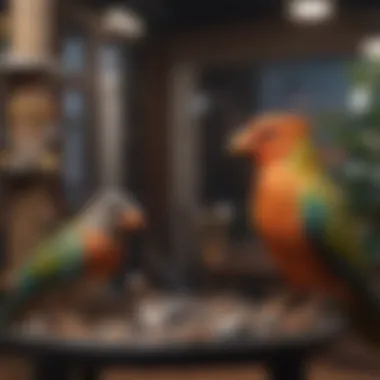
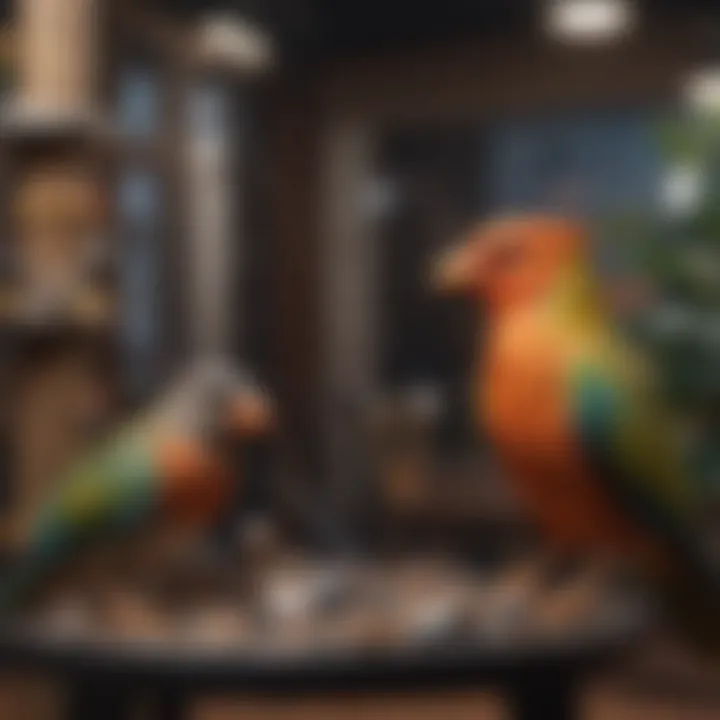
Intro
Bird gyms and play stands are crucial for the well-being of pet birds. These structures provide a place for exercise, mental stimulation, and social interaction. When incorporated into daily routines, they can enhance a bird's quality of life significantly. The benefits extend beyond mere leisure; they help birds develop their natural behaviors and maintain their physical health.
In this guide, we will discuss the various aspects of bird gyms and play stands. The following sections will delve into care tips, behavioral insights, nutritional guidance, wellness and health considerations, and enriching activities for your feathered friends. Each section aims to provide a comprehensive insight, combining practical advice with a deeper understanding of your bird's needs.
Care Tips
An essential foundation for any bird's well-being lies in proper care. Regular attention to their environment and routine can lead to happier and healthier companions.
Daily Care Routines
Bird owners should aim for consistency in daily routines. This includes feeding, cleaning, and playtime. Establish a schedule that includes morning feedings and a few hours of out-of-cage time for physical activity. Incorporating varied stimuli during play can keep excitement high and discourage boredom.
Cage Setup and Maintenance
A bird's cage should be spacious enough for free movement. Install perches at various heights and distances. Consider materials that won’t harm your pet. Regularly monitor and adjust items within the cage to prevent over-familiarization. Cleaning should occur weekly, removing uneaten food and washing toys to maintain hygiene and health.
Hygiene and Cleaning Practices
Good hygiene is non-negotiable. Clean food and water dishes daily, disinfect perches and toys, and perform a thorough clean of the entire cage weekly. Use bird-friendly cleaning solutions to avoid harmful residues. By preventing the accumulation of bacteria, you ensure a healthy living space for your bird.
Seasonal Care Adjustments
During colder months, ensure your bird is warm enough. Avoid drafts and consider adding heating elements if necessary. Conversely, during hot weather, provide shaded areas and fresh water to keep them hydrated. Adjust flying and engaging activities according to your bird's comfort levels in different seasons.
Behavioral Insights
Understanding your bird's behavioral patterns is vital to its care. Birds communicate feelings through body language and exhibit certain traits that are essential to know for effective care.
Understanding Bird Body Language
Familiarize yourself with signs of happiness and distress in birds. A fluffed-up bird may be cold, whereas a puffed bird can indicate relaxation. Learn also to recognize other signs—such as specific vocalizations—which often indicate mood changes.
Common Behavioral Issues and Solutions
Birds may display behaviors like excessive screeching or frequent feather plucking. Identifying triggers is the first step to managing these issues. Stress, boredom, or an unsuitable environment often exacerbate these behaviors.
Positive Reinforcement Techniques
Using treats or praise as motivation can encourage desirable actions in your bird. Focus on rewarding good behavior, such as stepping up into a hand or exploring a new toy. This approach reinforces good habits and builds trust between you and your bird.
Social Interaction Needs
Birds are social creatures that thrive on interaction. Regular engagement is crucial. Identify when your bird requires attention. Shared playtime, interaction with other birds, or even getting outside for fresh air increases both mental and emotional well-being.
Nutrition Guides
Nutrition serves as the backbone of a healthy bird. Knowing what and how to feed your pet is essential for their ongoing health and vitality.
Essential Diet Components
Seeds and pellets are standard components in a bird's diet. However, adding fresh fruits and vegetables enrich their nutritional intake. Foods such as spinach, carrots, and apple pieces can be beneficial. Balance is necessary to prevent obesity and related health problems.
Safe and Toxic Foods
Bird owners must be informed about safe foods and those to avoid. For instance, avocados and chocolate are toxic to birds. Store this knowledge safely as mistakes can lead to severe health issues.
Supplements and Treats
Evaluate if supplements are necessary. Some birds may require additional calcium or vitamins. Opt for bird-safe treats that are low in sugar. Occasionally providing nuts or dried fruits can serve as an effective reward during training.
Feeding Strategies for Different Species
Different birds have varying dietary needs. Research relevant to your bird’s breed will inform you of their specific dietary requirements. Hyacinth macaws, for example, require larger quantities of nuts, while smaller birds benefit more from an assorted mix of seeds.
Wellness and Health
Regular maintenance of health is critical to every pet bird's longevity and joie de vivre.
Routine Health Checkups
Establish a schedule for veterinary visits. Regular health checkups can catch potential problems early. Be sure to consult a vet who specializes in avian care to ensure your pet receives the most informed guidance.
Identifying Symptoms of Illness
Birds can disguise illness well. Watch for signs like lethargy, changes in eating habits, or unusual droppings. If behaviors change suddenly, it should prompt a vet visit.
Preventative Care and Vaccinations
Discuss health risks with your veterinarian. Having a vaccination schedule is essential, especially if your bird is frequenting public areas or meets others during socialization.
Mental and Emotional Well-being
Mental health is just as important as physical health. Provide diverse experiences for your bird and encourage their natural instincts through various activities tailored to their personality.
Enriching Activities
Stimulation requires active thought regarding toys, games, and experiences that court curiosity.
Toys and Playtime Ideas
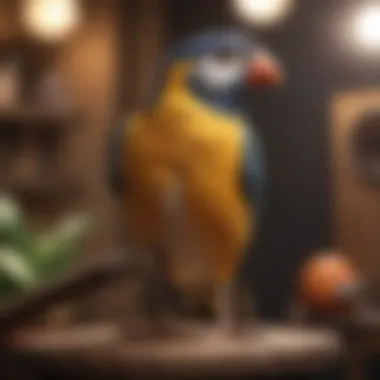
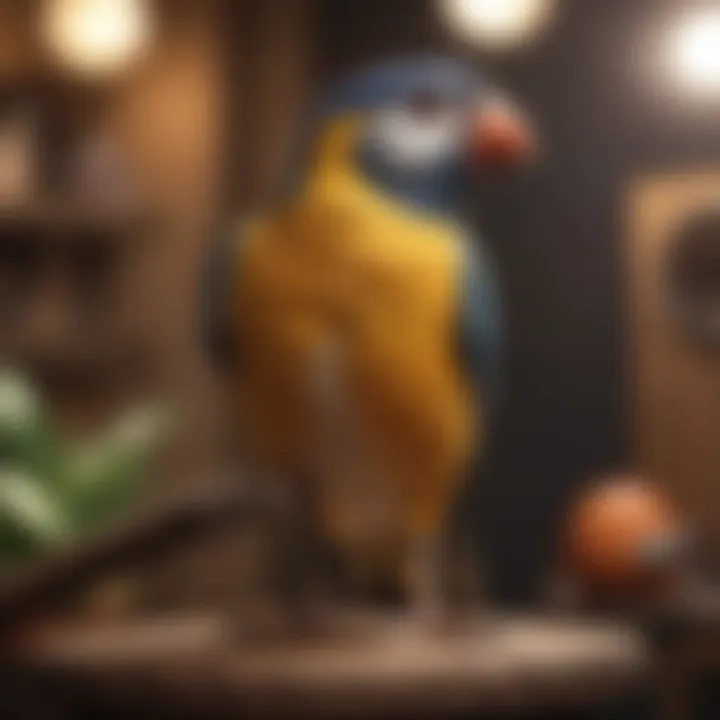
Introduce challenge-based toys that encourage problem-solving, ensuring they are the right size for your bird. Rotate toys regularly so that your bird remains engaged. Keeping things fresh prevents boredom—an unfortunate trigger of self-destructive behavior.
Training and Tricks
Train through patience and provide enjoyable learning experiences. Simple commands like
Understanding Bird Gyms and Play Stands
Bird gyms and play stands serve a crucial role in the well-being and enrichment of pet birds. They are a source of physical activity, keep birds mentally stimulated, and contribute positively to their overall health. Owners must understand the distinction between these items and their specific benefits. This understanding leads to informed decisions, improving birds' quality of life.
Definition and Purpose
A bird gym is a structured play area designed primarily for birds to exercise and explore. These setups often include perches, climbing structures, and various accessories. Conversely, play stands are usually simplified and flexible, offering a space for play without extensive features. Both pieces of equipment are integral in providing environments where birds can engage in natural behaviors that mimic those in the wild. They encourage stretching, climbing, and searching, which are habitat-specific actions that promote muscle use and coordination.
The purpose of this equipment goes beyond just play. It creates a safe space for birds to interact with their owners and their environment. The bonds between pets and owners can strengthen during shared playtime. Owners can actively involve their birds in daily routines, enhancing feelings of security and friendship. These activities are vital for both physical and emotional stimulation. Creating a multi-dimensional space nurtures the bond between the bird and human, ultimately enriching both lives.
Importance for Avian Health
Opting for high-quality bird gyms and play stands directly impacts avian wellness. When birds engage with these structures, they are less prone to harmful behaviors, such as excessive vocalization or feather plucking, which could stem from boredom or stress. By stimulating their cognitive functions, owners combat the risks associated with a sedentary lifestyle and provide animals with an engaged platform for exploration.
Health also integrates aspects like physical condition and mental comfort. Playtime on these stands can result in stronger muscles, enhancing balance and agility. This activity influences feather condition as well, as birds exercise their limbs and wings more often.
Furthermore, exposing birds to a diversified daily experience on gyms and stands ultimately leads to happier, healthier pets. A variety of experiences keeps domestic birds inspired and turns typical days into exciting adventures.
Important Note: Enhanced physical activity and mental engagement result in better overall health and can lead to a longer lifespan for pet birds.
Incorporating these elements through bird gyms and play stands informs bird slanguting and ultimately nurtures a fruitful companionship between owners and their feathered friends.
Types of Bird Gyms and Play Stands
Understanding the variety of bird gyms and play stands is vital for all pet bird owners. Different types serve unique purposes and benefit birds in various ways. Choosing the most suitable option requires knowledge of what each type can offer. Identifying the right playground for your bird supports their health, happiness, and well-being.
Indoor Versus Outdoor Options
Bird gyms can be divided into indoor and outdoor options. Indoor gyms often have a structure designed for the confined spaces typical of homes. They are usually small, portable, and can fit well in any room. Outdoor play stands, however, need to be more robust. They are customarily made with materials that resist environmental effects such as sun, wind, and rain. Each option provides essential benefits:
- Indoor Options:
- Outdoor Options:
- Space-saving and designed for indoor use.
- Look nice inside the decor of a home.
- Easy access for birds and pet owners.
- Provide fresh air and new environments for your pet.
- Allows for exposure to natural sunlight.
- Larger spaces for physical activity and exploration.
Before purchasing, consider your living situation and your bird’s needs. The shifting between indoor and outdoor places can contribute to an enriched life for your bird.
Portable Play Stands
Portable play stands offer a flexible solution for bird owners. These stands are lightweight and can be moved from location to location with ease. Birds can benefit from differing environments and sightings. This portability caters to various situations, such as treks to the backyard or other places. Key aspects include:
- Convenience: They easily fit into homes, making it simple for birds to enjoy variety.
- Tethering Activities: You can engage your bird at numerous locations, reducing boredom.
- Enrichment: New settings can motivate birds to explore and socialize with their human companions.
Keep in mind that portability should not compromise stability. Securing your bird while during activities physically manages both safety and stress. Consider the nature of your living arrangement and spaces before choosing a portable option.
Multi-Level Gyms
Multi-level gyms are a splendid solution that provides birds with versatile physical and mental stimulation. These structures often include ramps, platforms, and ladders. Different levels encourage navigation, climbing, and playfulness. Notable features include:
- Variety: The diverse elements maintain interest. Birds can safely explore the multiple platforms.
- Building Physical Incentive: Climbing engages muscles and nurtures coordination.
- Social Interaction: If you own multiple birds, they can enjoy time together on different platforms.
Two central ideas surround multi-level gyms: the height and intricate design appeal to larger birds that need even more activity stimulation compared to smaller breeds. Investing in this variety of gym can yield long-term benefits for your bird's daily exercise needs.
Materials Used in Bird Gyms
Selecting suitable materials for bird gyms is fundamental to ensuring their longevity, safety, and overall effectiveness. Different materials possess unique attributes which can positively influence your bird's play experience. Quality choices enhance playfulness and offer a safe environment. When creating or choosing a bird gym, familiarity with the materials involved plays a vital role in making appropriate selections for your avian friend.
Wood Types and Their Benefits
Wood is a preferred material for many bird gyms due to its natural characteristics. Bird's claws can grip wood firmly, helping them exercise and maintaining healthy feet. Additionally, wood has its own regulations – each tree type has different absorbtion properties, affecting durability and suitability.
Commonly used woods include maple, pine, and oak. Maple is sturdy and commonly free of harmful chemicals. Pine must be treated properly because sap can be irritating for some birds. Oak is also solid but is often pricier.
When selecting a wooden bird gym, consider:
- Durability - some woods break down faster
- Non-toxicity - always ensure woods are free from using chemicals
- Natural feel -Homelike texture often enables the products be pleasanter for your bird.
Metal and Plastic Considerations
Though perhaps less appealing than wood, metal and plastic have their specific roles in crafting effective bird gyms. Metal options increasing durability against chewing. Such materials can offer additional safety, as a refurbished finish hinders rust and lead contamination.
Stainless steel and powder-coated metals are excellent options. They do not blunt your bird's beak and offer selective challenging environment.
On the other hand, plastic choices come into play for various accessories such as trays and swings. Quality plastics are lightweight, easy to clean, and generally activate playful engeries.
Consider these factors when choosing metal or plastic for your pet's bird gym:
- Safety and toxicity - Ensure choice contains safe non-offensive fixes
- Cleanability - smooth edges enhance hygiene and averts disease
- Chemical Resistance - makes them easy maintainence
Natural Versus Synthetic Materials
Choosing between natural and synthetic materials raises important considerations. Natural materials are often favored for emotional and social needs since they provide familiar texture and atmosphere. Contrarily, the likeliness is plants used in synthetic materials contribute less playfulness and interaction.
Natural options include untreated branches and organic substances, bringing inherent characteristics beneficial for biting and advocating adventurous playtime. Synthetic options might compare in durability but often lack organic touch necessary for emotional stimulation.
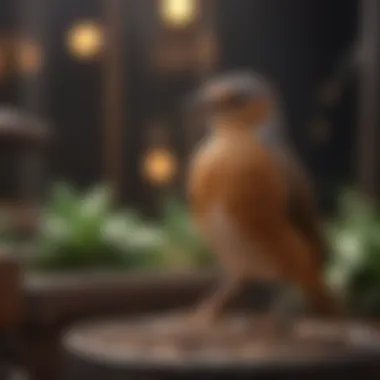
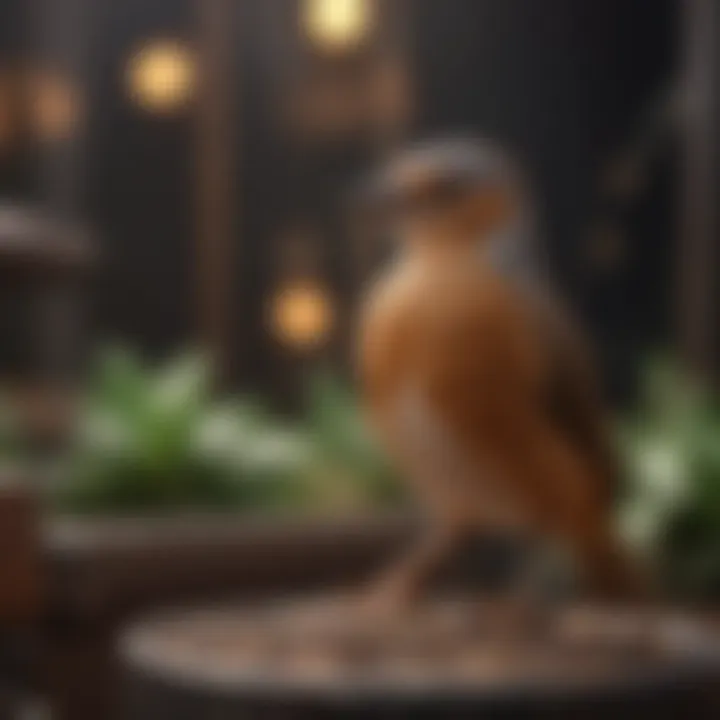
A few points to ponder:
- Natural materials often look more colorful and engaging.
- Easily attrative designs sparking inclination to ripe down all surfaces in times import ganliness doesn't counter resume theirs functionality.
- Evaluating both factors enable balanced dedications for your bird gym choice.
Maintaining awareness of bird gyums materials entrenches a healthy enriching environment. The proper knowledge ensures you provide a safe, enjoyable habitat that accommodates overjoying responses of smarter pet.
Features to Consider When Choosing Gyms
When selecting a bird gym or play stand, it's essential to consider several features that cater to the needs of your pet bird. The right choice can ensure comfortable playtime while promoting the overall well-being of your avian companion. Leveraging these features helps to create an environment that not only entertains but also supports natural behaviors and interactions.
Size and Space Requirements
The dimensions of a bird gym or play stand are critical. Birds require enough space to move, climb, and explore. Think about the species and size of your bird. For larger breeds, such as macaws or parrots, a more extensive setup is beneficial. In contrast, smaller birds like budgerigars may require less space.
Try to measure your available space; will the gym fit comfortably without cluttering the area? It is also prudent to keep in mind that the position of the gym can affect the airline of movement.
- Analyze potential locations for your gym within your home.
- Ensure the gym does not obstruct the pathways inadvertently.
- When planning, don't forget to consider the height – both owners and birds benefit from elevated spaces.
Stability and Safety Features
Bird safety should always be the top priority when selecting any equipment, including gyms. Pay attention to the stability of the play stand. It should not wobble or tip over when the bird jumps or climbs onto it. Look for features such as a broad base or rubber grips on the bottom, helping it adhere to the ground.
Additional safety features include:
- Non-toxic and durable materials that cannot easily break down or splinter.
- Rounded edges to avoid any injury during play.
- Design such that potential access to small or dangerous parts is eliminated.
All these considerations contribute to a reliable and safe play area for your birds.
Accessibility for Birds
Accessibility is another underrated yet paramount feature while choosing a bird gym. Opt for designs providing easy access for your birds. The opening for climbing should not require excessive effort for the individual birds. Beyond this, accessibility includes multiple levels of interest; various perches that incorporate different widths cater to all types of birds.
Make sure that:
- The setup encourages various easy methods for birds to step up or down easily.
- Include toys and food stations that are simple yet engaging, making their environment colorful and fun.
- Utilization of ramps or installed ladders guarantees that all birds can access different sections of their gym.
In summary, focusing on size, stability, and accessibility significantly enhances the quality of bird gyms. By paying careful attention to these aspects, you ensure a joyful and thriving environment for your pet bird.
The Role of Play Stands in Behavioral Enrichment
Understanding how bird gyms and play stands function as more than just accessories is vital for enhancing the lives of pet birds. The role of play stands extends far beyond basic physical exercise; they significantly contribute to behavioral enrichment. With these platforms, foraging, climbing, and, playing mimic the vital activities that birds engage in within their natural environments.
Encouraging Natural Behaviors
Birds are active creatures that thrive on variety and opportunities for natural expressions of behavior. One of the key benefits of play stands is how they promote instinctive actions such as climbing, playing, and foraging. In their natural habitats, birds often fly and traverse diverse terrains. Play stands can replicate a simplified version of these experiences, helping keep birds physically fit.
- Climbing: Providing sturdy perches that encourage climbing reinforces their muscle tone and agility.
- Foraging: The addition of toys or treated foraging areas helps stimulate their instinct to search for food, as they would do in the wild. This search behavior not only fulfills hunger needs but also offers mental stimulation.
- Exploration: Different textures and forms from varied materials on gyms encourage exploration. By providing nuanced surfaces, pet owners can satisfy the bird’s curiosity.
“Bird-centric designs, which mimic natural settings, boost both physical and psychological well-being in pet birds.”
To leverage these benefits, pet owners should occasionally change the arrangement of toys and materials. This change keeps the environment fresh and prevents boredom, allowing each bird to express its individuality.
Stimulating Social Interactions
In addition to fulfilling individual behavioral needs, play stands offer environments conducive to social interactions. Birds are inherently social animals and often require connections with their peers or owners. Properly designed gyms encourage these interactions effectively.
Establishing a safe and enticing configuration of branches, platforms, and play activities encourages birds to explore and engage both among themselves and with humans. Good socialization practices ensure the following:
- Building Bonds: Through shared activities on the play stand, birds can develop stronger relationships with their companions, leading to well-adjusted, happier animals.
- Encouraging Communication: Whether vocalizations or body language, birds should communicate freely. Play stands offer ideal opportunities to engage in these exchanges, fostering healthy communication patterns.
- Preventing Behavioral Issues: A well-structured play area can deter behavioral problems stemming from boredom or isolation. Increased interaction, both social and environmental, ensures that birds remain mentally healthy.
By carefully selecting a design and regularly giving opportunities for socialization and interaction, owners can nurture happier and healthier birds. The importance of these elements cannot be overstated as they signify both well-being and fulfillment in these creatures’ lives.
Placement and Setup of Bird Gyms
Setting up your bird's gym or play stand requires careful thought. The right placement can enhance a bird's sense of security, as well as make the spaces they occupy more comfortable and enriching. This section discusses how to choose ideal locations and create a pleasant atmosphere for your feathered friends.
Ideal Locations in the Home
Identify the best locations in your home for setting up bird gyms is crucial. Place them in areas with an adequate amount of natural light, as sunlight can be beneficial for a bird's health. Bright spaces allow birds to perch and engage in their surroundings, making them feel more involved in the home. Additionally, maintaining a stable environment minimizes fluctuations that may impact a bird's behavior.
Select spots where loud noises, such as those from speakers or appliances, are minimized. Birds can be sensitive to sudden and loud sounds which might result in stress or agitated behavior. Therefore, corners away from the busy primary areas are commonly good options. This setup gives the bird a space to retreat to, should they wish to regain calm.
Another aspect to consider is access to human activities. Positioning cages close to family interactions creates an immense feeling of inclusion instead of isolation. For example, places near the sofa or dining area can be ideal. Making sure that the gym is at a level where the bird can interact with owners can strengthen the bond.
Creating a Comfortable Atmosphere
The atmosphere surrounding your bird gym can directly affect how your pet feels in this space. Begin by ensuring that the birds have access to fresh air. Freshness in the environment helps them feel revitalized.
It's also essential to consider temperature variations in the area. Avoid places where drafts or direct heat from sources such as heating vents, fans or air conditioning units might affect their comfort level. Stability provides a sense of security for feathered inhabitants. ;
Adding elements such as soft textiles or decorative covers can make spaces feel finer. Inside the enclosure, a variety of perch types encourages exploration. Use perches made from naturally shaped wood to help them exercise their grip strength and foot dexterity.
To conclude, the right placement and a comfortable environment contribute a lot to a bird's health and overall happiness. Invest time in identifying the locations and gearing them up with suitable elements. Your birds will truly appreciate it.
A well-placed and comfortable bird gym enhances the overall quality of life for your pet. Engaged birds contribute positively to any home atmosphere.
Cleaning and Maintenance of Bird Gyms
Cleaning and maintaining bird gyms is vital for the health and longevity of both the equipment and the birds that use them. Over time, dirt, debris, and waste can accumulate, potentially exposing birds to harmful bacteria. Regular upkeep not only assures the hygiene of their play areas but also preserves the structural integrity of the gyms and stands.
Proper cleaning protocols safeguard against illness by preventing pathogenic growth and ensuring that the birds do not interact with residues that can be toxic. Moreover, a maintained setup encourages a positive and engaging environment for birds, enhancing their psychological well-being. With these considerations in mind, let’s delve into the cleaning practices and identify issues related to wear and tear that every bird owner should be aware of.
Routine Cleaning Practices
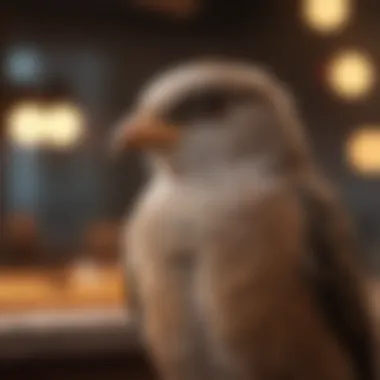
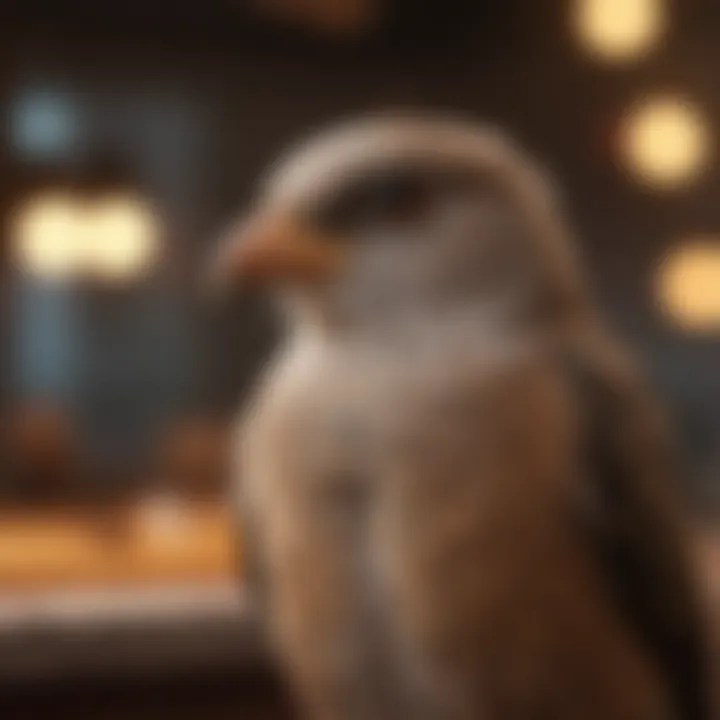
Establish a routine cleaning schedule to encourage a sanitary play space. Start by regularly removing any dropped food or plastic material. Using gentle cleansers is key; harsh chemicals can be unsafe for birds. Try a mild soap mixed with warm water to wipe down surfaces. It should be noted that natural cleaning options like vinegar and baking soda can effectively reduce bacteria without posing harm to avians.
Steps for Routine Cleaning:
- Disassemble the play stand when necessary, allowing access to every crevice.
- Rinse areas under running water to remove excessive waste.
- Gently scrub using a soft brush and cleaning solution for thoroughness.
- Rinse off all residues, ensuring nothing lingers.
- Dry each part completely before reassembling and returning to the area.
It’s recommended to conduct deeper cleanings intermittently. This involves checking for any buildup that might be hidden. At these times, carefully inspect any planes where birds perch or interact; ensuring these spaces are clear from threats is paramount.
Identifying Wear and Tear
Surveying the condition of bird gyms is crucial to spot signs of degradation before it becomes problematic. Regular inspections can help ensure structural safety and functionality. Check for loose fittings, splintered wood, or corroded metal. These conditions can result in accidents if they go unchecked but knowing what to look for can prevent risks.
Common Signs of Wear:
- Splinters or Roughness: Monitor wooden components for rough patches that can injure feet.
- Swelling or Warping: This indication often arises in solid wood when exposed to constant motion or moisture.
- Rust on Metal Components: Continuous contact with droppings amplifies this risk; any rust should be treated immediately or scheduled for replacement.
- Frayed Edges or Fabric: Specifically applicable to swings and maze structures which usually have soft components.
Keeping an eye on these factors allows bird owners to proactively react, maintain equilibrium in their birds' play areas, and ultimately ensures these levels of engagement remains safe and stimulating.
Routine cleanliness and vigilance not only reserves bird well-being but can extend the life of equipment, maximizing investments and improving social play experiences.
Bird Gym Accessories and Add-Ons
Bird gyms and play stands do not only serve as primary structures for birds. Accessories and add-ons enrich these environments, adding layers of engagement for birds. More importantly, they can enhance a bird’s mental and physical well-being. Various types of accessories cater to different behaviors and needs, addressing what the bird enjoys and educating the owner in the process.
Toys for Enhanced Play
Toys are essential accessories. They promote stimulation, ward off boredom, and satisfy your bird’s curious nature. Observing your bird playing can be enjoyable for an owner, primarily when a variety of toys are in position.
Each bird species has distinct preferences depending on their size and temperament. For instance, larger breeds like the African Grey often appreciate wooden or puzzle-like toys. Such toys require effort and problem-solving skills. On the other hand, smaller species, like budgies, may prefer simpler items like bells or mirrored toys, reflecting their playful enthusiasm.
Some popular types of toys used include:
- Swinging toys: Promote natural swinging instincts as birds hang and play.
- Chewing toys: Help to strengthen their beaks while addressing their natural urge to chew.
- Foraging toys: Encourage mental challenges by hiding treats inside or attaching food surprise, bridging enjoyment and nutrition.
Choosing the right mix of toys requires attention. Varied materials such as wood, plastic, and cotton result in different experiences. Monthly rotations keep engagement high, making play equipment appear novel.
Food and Water Stations
Adding specific food and water stations is crucial for keeping the environment attractive and functional. Unlike traditional cages where birds must access their food from one area, dedicated stations on a gym or play stand allow birds to interact while also promoting healthy eating habits.
Installing multiple feeding locations encourages exercise as the bird moves along the stand. Placing water bowls higher up, for example, promotes flying and climbing among energetic, adventurous birds. Such choices keep them active and contribute positively to their physical health.
Consider also the following aspects:
- Material of bowls: Stainless steel or ceramic materials are easier to clean and less harboring for bacteria.
- Accessibility: Ensure bowls are easy for the bird to reach but also discreet from droppings.
- Size: Choose the size according to the species. A too-small dish may not hold enough water or food for larger birds, leading some to find alternative, undesirable drinking areas.
Integrating these accessories simultaneously renders a benefits-rich play station environment. Through thoughtful selections, you cater not only to their needs but also the budding relationship between the pet and the owner.
Safety Considerations
Safety considerations are essential topics when discussing bird gyms and play stands. Ensuring the safety of your pet bird primarily involves selecting materials and supervising their activities. A safe environment promotes well-being and prevents injuries.
Avoiding Harmful Materials
When it comes to bird gyms, choosing the right materials is crucial. Avoid any items that contain harmful chemicals or toxic substances. Common materials like coated steels or certain types of plastics may leach harmful compounds if they wear down. Instead, look for products made from safe, natural materials. Natural wood, for example, is typically non-toxic. Choose hardwoods such as oak or maple, which are durable and comfortable for birds to perch on. Always verify that any paint or finish on gym structures is non-toxic and specifically rated for pet use.
- Research brands that prioritize bird safety.
- Inspect materials before making a purchase.
- Look for any certifications regarding non-toxicity.
Cages, play stands, and gyms incorporating harmful substances can lead to long-term health issues for your bird. Furthermore, it's important to ensure that any assemblies are strong and avoid sharp edges or protruding splinters. These can cause cuts or injuries, adding further risk in a play area meant to be safe.
Monitoring Bird Activity
Observing bird behavior is just as essential as providing proper structures for their play. Continuous monitoring allows owners to quickly identify any signs of stress or dangerous actions. A safe environment supports a bird's physical and mental health, enabling healthy interactions with their environment.
- Daily observation: Engage with your bird regularly to understand their custom behaviors.
- Behavioral changes: Watch for signs such as excessive preening, aggressiveness, or withdrawal. These can indicate that something about their environment feels unsafe.
- Limit unsupervised time: New gyms and stands should be monitored closely until birds become accustomed. Watch how they interact, looking for risky ventures like attempting to fly off a too-high perch.
By staying vigilant, owners can deter reluctance or anxiety from the bird's playtime. Consider noting any unusual behavior or changes that persist over time to reinforce the efficacy of your safety measures.
Ensuring safety goes beyond product selection; attentive bird care makes a world of difference in both mental and physical health.
Ultimately, safe environments cultivate happier, healthier birds.67182820In summary, thorough materials checks and vigilant observation of your bird's interactions with gym equipment contribute significantly to overall avian safety.
Understanding Bird Behavior
Understanding bird behavior is crucial in harnessing the benefits of bird gyms and play stands. Recognizing how birds interact with their environment allows pet owners to create an enriching and safe space that caters to the needs of their feathered companions. The behavior of birds reflects their mental state, learning preferences, and instincts formed in the wild. Not only does this understanding shift how owners approach bird care, but it greatly impacts the well-being and happiness of the birds themselves.
Analyzing Stimulation Needs
Birds are naturally curious creatures, and they require adequate stimulation to maintain their health. Stimulation can take many forms, from toys to social interaction and visuall changes in their environment. Analyzing the stimulation needs particular to each species can guide owners in selecting the right type of bird gyms and play stands. Different birds display varying preferences in activity. For instance, larger parrot species like African Greys may prefer complex structures with various levels and hanging toys, while smaller birds like budgerigars may thrive in simpler setups.
Key aspects to consider include:
- Activity level: Birds that exhibit high energy should have access to multi-platform gyms or hang traps that provide ample roaming space.
- Cognitive challenges: Puzzles and interactive play increase engagement and mental sharpness.
- Species characteristics: Some birds flock and prefer space to engage with one another, while others may be more solitary.
Identifying which types of hemstimulations serve the unique needs of each bird is fundamental concept pressing in reveling their happy existences you're providing a beneficial environemnt.
Recognizing Signs of Stress
Birds can show signs of stress in various ways, which can be an important indicator that modification or intervention is needed in their environments. Monitoring the well-being of birds is part and parcel of responsible ownership. Common signs include excessive vocalization, feather plucking, or withdrawal from interaction. A stressed bird may also display behavioral changes, such as incessant pacing or biting.
Understanding these signs can aid in recalibrating the equipment used, like play stands or toys. Here are some stress indicators to watch for:
- Decreased activity: A previously playful and active bird suddenly becomes lethargic and disinterested.
- Aggressive behavior: If your bird typically has a sociable demeanor, sudden aggression toward other pets or humans is cause for concern.
- Physical changes: Changes in appetite, over-preening, or unusual droppings are signs that cannot be overlooked.
Incorporating appropriate bird gyms that complement their need while making adjustments based on recognizable stress levels will greatly enhance their quality of life. Knowing what stimulates birds versus what may cause stress can draw clear contrasts between environments that provide comfort and joy versus those breeding disharmony.
Through an informative understanding of bird behavior, owners become equipped to make informed decisions that foster a flourishing living arrangement.















